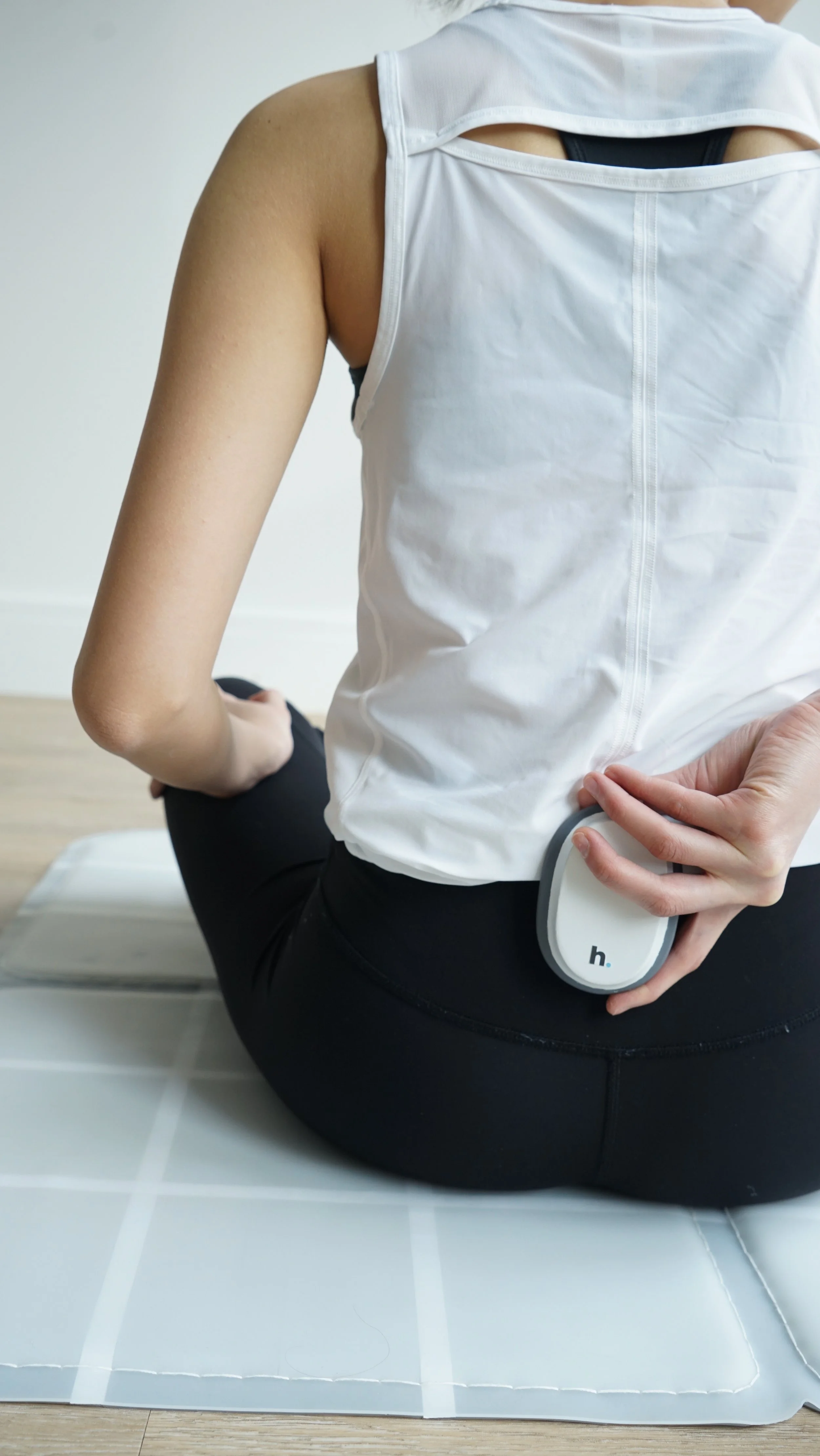homebody
industrial design • system design • product presentation
track + guides you through your home workouts
Please make sure to watch this video! You don’t want to miss this!
homebody is a home workout guidance system to ensure proper posture and form. The product consists of a pressure-sensitive mat, a pressure-sensitive wearable piece, and pairing software.
homebody mat
The homebody mat is the homebase of your exercise. The grid indication helps you find your position, and the material provides grip during your workouts.
Pressure-sensitive
homebody assesses users’ stance and overall form through pressure sensors which are evenly embedded in the mat.
For example, if one’s knees are caved inwards when performing a squat, the pressure shifts towards the foot arch instead of being evenly distributed.
Grid Indication
The mat with grid markings helps users register themselves into the proper stance. Synchronized with graphic indications in the software, finding your position has become much more simple!
Ease of
Storage
The mat folds into quarters to minimize storage space.
homebody wearable
The slide-on waist wearable keeps your spine position in check. A neutral spine and back is central to almost all movements.
Pressure Sensitive
While the mat detects users’ overall form, the waist piece makes sure that the spine maintains a neutral position, which is critical to most exercises.
For example, if one drops their waist while holding a plank (color pink), they’re over-stressing the lower back instead of tightening the core and ab muscles. And there would be pressure hot spots on both ends of the homebody wearable.
Clip-On
The waist wearable uses a slide-and-clip mechanism that can be easily applied with one hand at the back of your waist. Considering movements that require users to lay their back flat on the mat, we really strived for ease of usage.
Rechargeable
The wearable is rechargeable, and the mat can be chagred from the detachable unit.
Hardware + Software
Pairing with the hardware products is the homebody App. Find personalized workout routines and improve your form with the guidance of the virtual trainer and responsive graphics.
Plank Scenario
When in the
correct posture,
a blue line, which is a simplification of your body, indicates that you’re on the right track.
To the left, her back is flat which is in good form.
When your posture is off,
The graphic turns red, and the trainer will guide you towards the right posture. Your current position is always in sync with the software, so the line curves as your body curves.
To the left, her hip is too high so the trainer on top is guiding her to lower her waist.
Lunge Scenario
When posture is incorrect,
the traveling dot (currently in red), which is again a simplification of your body, exceeds out of the line bar, and the trainer will verbally and visually guide you to correct.
To the left, her knees are over her toes putting too much pressure, so the trainer on the left is guiding her to shift her knee backward.
When posture is corrected,
The traveling dot turns blue, which indicates that your lunge is within range.
To the left, she is maintaining a good knee angle with her back straight.
Quality over Quantity
homebody wants to redefine the goal of working out. For example, holding a perfect plank for an amount of time rather than counting down. Or in sets/reps, it is something you can build on top of rather than emphasizing how much you can do in a limited time. We encourage this reward system to motivate trainees based on their own performance and fitness level.

homebody
Track + Guide
Initial Research & Interview
The Importance of Posture
Interviewing with licensed trainers, as well as, with people of various fitness levels brought the attention of postures. We can not stress enough the importance of a “good” posture during a workout.
In current home workout settings, vague instructions are provided, but there is no immediate feedback on whether or not the person is actually doing it correctly. Users are the only ones keeping themselves accountable, and that doesn’t necessarily lead to a quality workout.
Posture Research
Jotting down frequently performed exercises as our library of inspiration and reference. As well as, brainstorming through workouts ourselves and with interviewees.
Feedback Exploration
Testing different methods of feedback. For example, haptic feedback (vibration) theoretically made sense but received the worst feedback during our test. The combination of visual + audio was the strongest in terms of clarity as well as usability when not looking at the screen.
Hardware
Form Development
Pinpointing design requirements, sketching, prototyping, testing, iterating,
and lastly making looks-like models.
UI Explorations
Exploring different visual styles and intuitive graphics to best communicate the trainee’s goal, travel distance, and range of movements. Also exploring other visuals to best represent the trainer, rep counts, etc.
Audio Explorations
Playing with different instrumental sounds and sound effects that will be heard during a workout session. Rep counts, notification sounds, vocal tones, and much more were sounds to be considered.
User Testing
& Feedback
Constantly getting feedback on what works and what doesn't. Looking into what type of visuals are intuitive for the users, what parts of our hardware are successful, and what needs to be improved.
Team
This is an 8-week group project done with Jessica Hsiao and Meicheng Chi for the course Spirit of Product Design.
Special Thank you
to friends, professionals, and professors who helped and supported us throughout the process- giving advice, letting us interview, modeling for us, participating in our survey and testings. THANK YOU!!

































